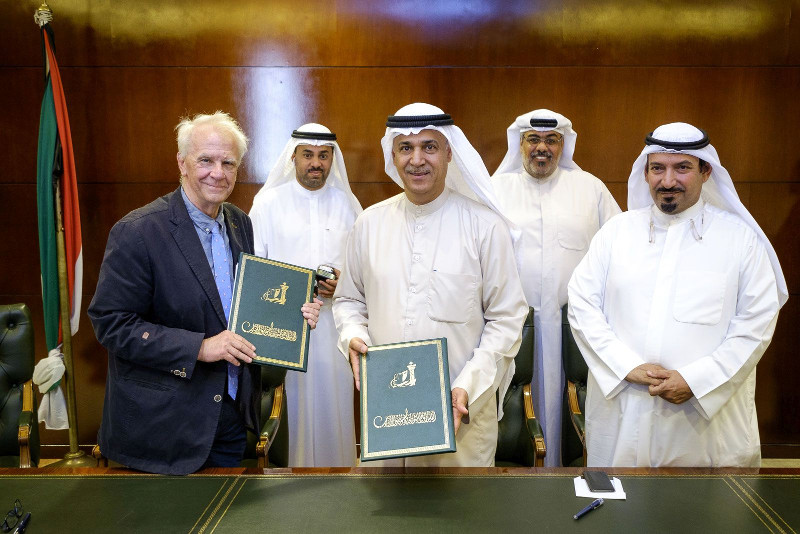An agreement for archaeological cooperation has been signed between the National Council of Culture Arts and Letters of the State of Kuwait and the Polish Centre of Mediterranean Archaeology, University of Warsaw. For the next five years the Kuwaiti–Polish Archaeological Mission will work on several projects in Northern Kuwait and Failaka Island.
The Kuwaiti–Polish Archaeological Mission was formed in 2007 and started work in Northern Kuwait in the fall of the same year, beginning with excavations of tumuli graves (2007–08), then expanding into several sub-projects, including the excavation of de¬sert wells (2008–11) and a survey of burials and other structures in the Al-Subiyah region (2009–12), as well as the excavation of the Bahra 1 settlement (since 2009). Further projects were initiated on Failaka Island: excavations of a part of the Qusur site (2011–13), a survey (2012) and excavations at Kharaib el-Desh, combined with an under-water survey (since 2013).
The site of Bahra 1 is a settlement dating from late 6th millennium BC. It combines elements typical of the so-called local, Arabian Neolithic (pottery and lithic tools) with cultural influences from Mesopotamia in the form of objects – and perhaps also some architectural features – typical for the Ubaid culture. Largest of the sites excavated to date in the Gulf region, Bahra 1 is also known to have been a shell bead production center. However, there are still many other research questions to follow up, so excavations at the site will continue.
Ongoing Kuwaiti–Polish projects on the Failaka Island include excavations at Kharaib el-Desht and underwater investigations along the island’s shore. Its main aim is the search for ports, harbors and fish traps used at various stages of Failaka’s history. The structures explored so far included single-room fishermen’s houses. The associated pottery dates them to late 17th–early 19th century. The range and variety of vessels reflects the trade exchange in the Gulf, with local wares from Bahrain, Qatar, the UAE, Oman or Persia, and occasional fragments of luxury table ware from Southeast Asia or China. Further research into the character of this settlement and its surroundings will be conducted in the future.
To continue with thorough archaeological investigations in Northern Kuwait, where previous KPAM surveys documented 200 archeological features, such as tumuli graves and other stone structures, a further survey project has been proposed. Its purpose is to produce an “archaeological picture” of the coastal region of Kuwait Bay and to check if any remains of Kuwait’s mainland or maritime history have been preserved in that area.

